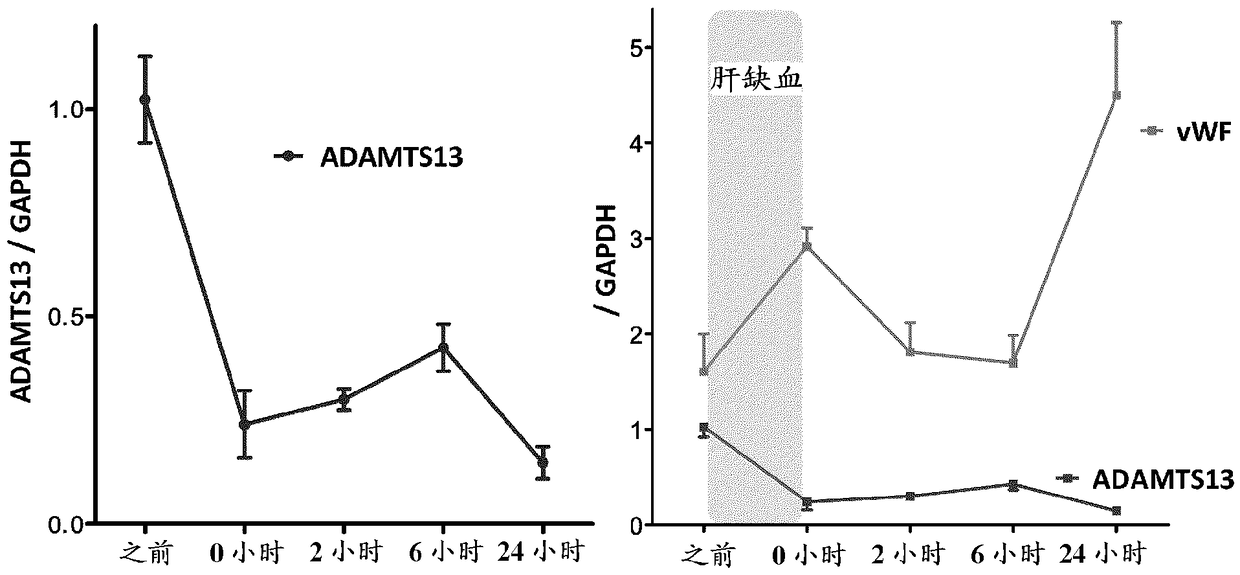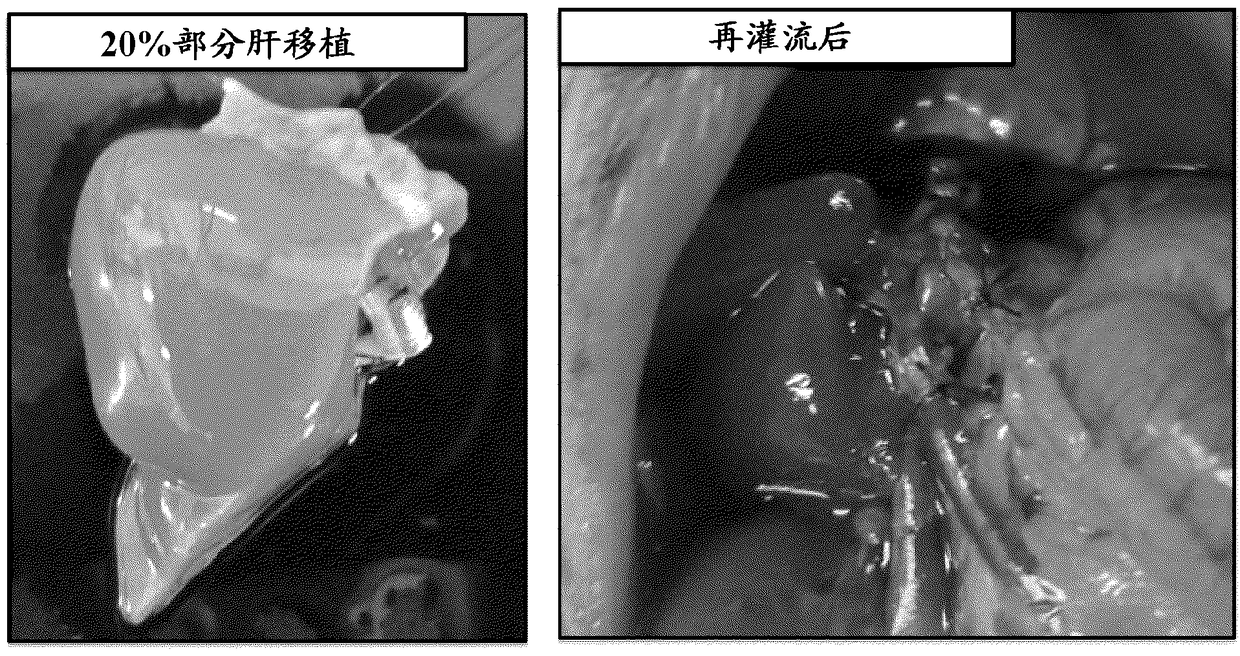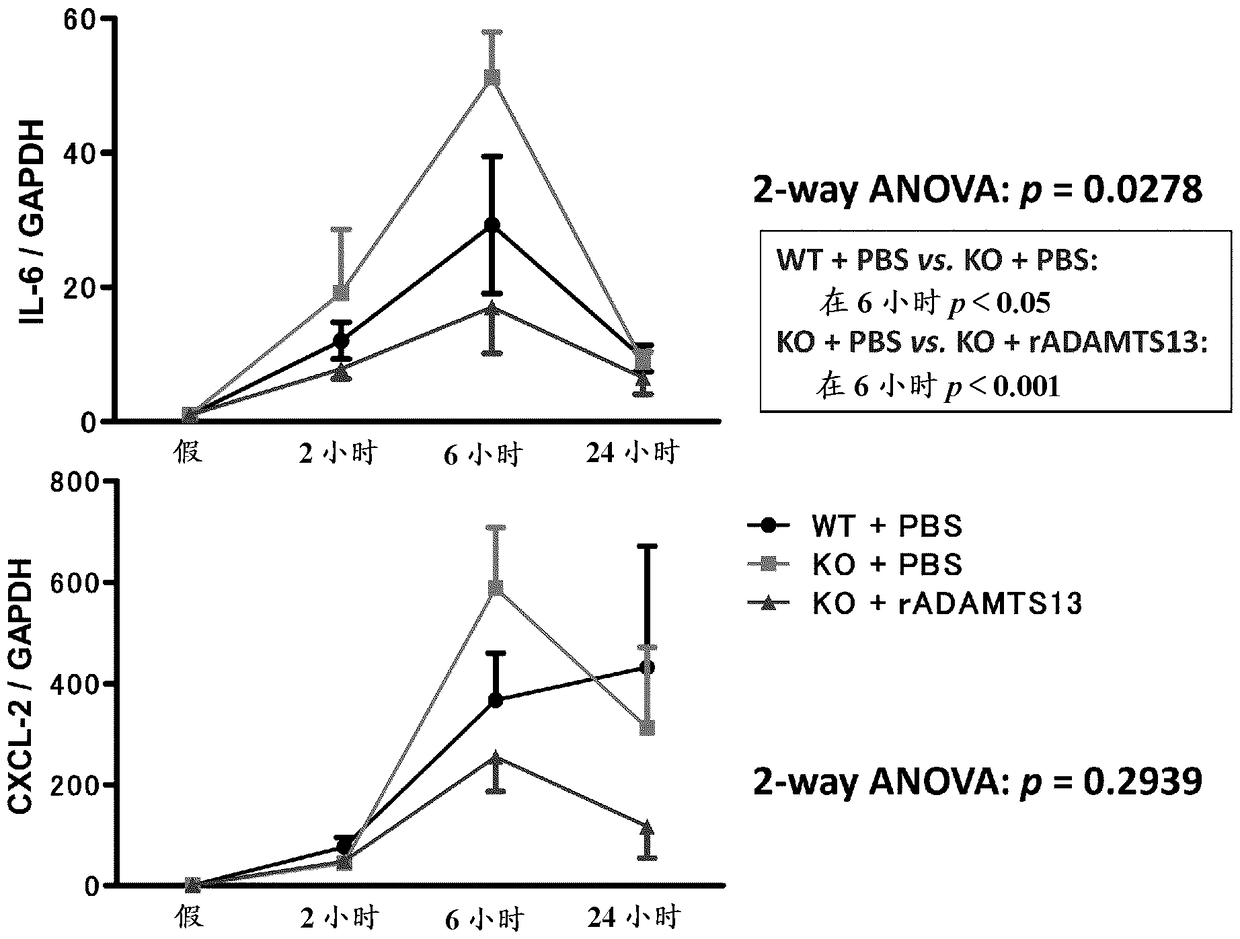Diagnostic agent and medicine comprising adamts13 as main ingredient
A liver function and disorder technology, applied in medical preparations containing active ingredients, disease diagnosis, peptide/protein components, etc., can solve problems such as unknown therapeutic drugs
- Summary
- Abstract
- Description
- Claims
- Application Information
AI Technical Summary
Problems solved by technology
Method used
Image
Examples
Embodiment 1
[0193] Hepatic nonparenchymal cell function is drastically reduced by cryopreservation of transplanted livers
[0194] Whole livers were removed from rats (Wistar rats, male, 250-270 g), and then ADAMTS13 activity in liver tissue was measured after 6 hours and 24 hours of simple cold storage in HTK solution. As an object, the relative ratio of 100% relative to the average activity value of the normal liver of 4 cases of unpreserved rats was plotted ( figure 1 ). ADAMTS13 activity was measured by FRET method (FRETS-VWF73: Peptide Research Institute).
[0195] As a result, there was no significant difference in liver escape enzyme values between the 2 groups of cold storage for 6 and 24 hours (there was no difference in the index of liver cell damage), and ADAMTS13 activity in the liver tissue was very sensitively inversely correlated with the cold storage time of the transplanted liver ( figure 1 ).
Embodiment 2
[0197] The basic state of liver dysfunction after chemotherapy in colorectal cancer is hepatic nonparenchymal cell disorder
[0198] Oxaliplatin, one of the key drugs in colorectal cancer chemotherapy, frequently causes liver dysfunction. Its morbid nature is sinusoidal obstructive syndrome (Sinusoidal Obstructive Syndrome: SOS) caused by the destruction of sinus wall cells caused by oxaliplatin. As an animal model of this SOS, using the most common single hyosostigline administration model, ADAMTS13 activity values 24 and 48 hours after administration of therapeutic drugs were compared and studied (n=5 for each group). and figure 1 In the same way as in the above method, after the liver tissue was collected, it was quantified by the FRET method.
[0199] NC: normal liver;
[0200] A24: 24 hours after administration of monosostigmine;
[0201] A48: 48 hours after administration of monosostigmine;
[0202] T24: 24 hours after the administration of monosostigmine + ther...
Embodiment 3
[0206] ADAMTS13 activity in blood is inversely correlated with the degree of hepatic insufficiency
[0207] From November 2012 to March 2013 in the Hepatobiliary Pancreatic / Transplantation Department of the Affiliated Hospital of Kyoto University School of Medicine, among 21 donors and recipients of adult living body partial liver transplantation, the preoperative ADAMTS13 activity value was monitored, which is the most commonly used in the world. MELD (Model for End-Stage Liver Disease) score and Child-Pugh score, which are indicators of hepatic insufficiency. As a result, the preoperative ADAMTS13 activity value showed a very perfect inverse correlation with MELD score and Child-Pugh score ( image 3 ). That is, it is considered that the ADAMTS13 activity value in the blood is effective as an index of hepatic insufficiency.
PUM
 Login to View More
Login to View More Abstract
Description
Claims
Application Information
 Login to View More
Login to View More - R&D
- Intellectual Property
- Life Sciences
- Materials
- Tech Scout
- Unparalleled Data Quality
- Higher Quality Content
- 60% Fewer Hallucinations
Browse by: Latest US Patents, China's latest patents, Technical Efficacy Thesaurus, Application Domain, Technology Topic, Popular Technical Reports.
© 2025 PatSnap. All rights reserved.Legal|Privacy policy|Modern Slavery Act Transparency Statement|Sitemap|About US| Contact US: help@patsnap.com



